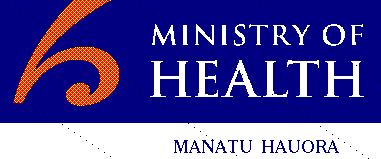

Ref No.:20010873
RESPONSE TO BRIEFING REQUEST
Subject:
Gender Reassignment Surgery
Attention:
Julia Carr for Hon Tariana Turia (Associate Minister of Health)
Copy to:
Hon Annette King (Minister of Health)
Hon Ruth Dyson (Associate Minister of Health)
Date:
11 July 2001
File Ref:
HC01-52-01
PURPOSE OF REPORT
1.
The Associate Minister has requested a briefing of Gender Reassignment
Surgery (GRS). This briefing provides background information, an
explanation of the Special High Cost Treatment (SHCT) policy which applies
to GRS, the application of the SHCT policy to GRS funding decisions, the
evidence base for decisions, and possible areas for ongoing policy
development. Copies of key documents on effectiveness evidence for GRS
are also attached.
BACKGROUND INFORMATION 2.
A 1999 study of gender dysphoria1 in Scotland identified the prevalence of
gender dysphoria among people aged 15 years and over as 8.18 per 100,000.
Translated into the New Zealand population these figures represent a
prevalence of approximately 250 persons. Not all of this group will seek GRS
as some will find that hormone therapy alone will provide sufficient symptom
relief.
3.
Currently, 11 applications for GRS are under consideration by the Ministry of
Health. All applications seek male to female surgery. Male to female surgery
is available in New Zealand at Southern Cross Hospital in Christchurch at an
approximate cost of $25,000 per surgery. The cost of female to male surgery
is not known, as this surgery is unavailable in New Zealand. No applications
1 gender dysphoria is a psychological state whereby a person demonstrates dissatisfaction with their
biological sex and requests hormonal or surgical sex reassignment. (Berkshire Priorities Committee)
1

Ref No.:20010873
for funding of female to male surgery have been received by the Ministry of
Health.
4.
Prior to 1998 the Regional Health Authorities purchased GRS for two
individuals through the Christchurch programme at Southern Cross Hospital.
Also during this time a plastic surgeon at Waikato Hospital was performing
reconstructive genital surgery for a variety of indications. It is not known how
many operations were performed for the indication of transsexualism at that
location.
SHCT POLICY
5.
There is no specific funding allocated within New Zealand for GRS, although
applications can be made to the SHCT pool. The SHCT pool is a limited pool
of approximately $5M, held by the Ministry of Health for distribution on a
national basis. Established on 1 July 1999, this risk pool funds procedures
that are outside the standard DHB contracts. Types of procedures funded
from this pool include; heart transplants for children, laser treatment for
malignant eye tumours, and rare treatments such as child haemodialysis.
6.
Applications to the pool always exceed available funding, and with many
different types of treatment sought, a generic framework to allow prioritisation
of applications has been developed. The framework consists of criteria that
target the limited available funding towards procedures that are most likely to
be clinically effective and cost effective. The specific criteria which are
applied to any treatment sought overseas, or in a New Zealand private
hospital, including GRS, are:
i)
The treatment is not currently available from any public hospital in New Zealand
or under any existing contractual arrangement.
ii)
The treatment has proven efficacy through appropriate clinical trials, and
preferably has also been established as effective when applied in regular
practice.
iii)
The treatment is well-established and not an experimental form of treatment.
iv)
Failure to receive the treatment would result in serious irreversible deterioration
in the patient’s condition or an inability to recover lost function, or significant
impairment to normal development of a child; or
Failure to receive the treatment could deny an adult with a lifelong disability
access to treatment that would lead to a marked improvement in their quality of
life.
v)
The chosen treatment is cost-effective, that is:
the expected long term savings to the health care system outweigh the
initial costs of treatment
the dollar costs per unit of benefit are acceptable when evaluated against
other MOH priorities.
2

Ref No.:20010873
vi)
Treatment would lead to reasonable prospects of survival and to an improved
quality of life after treatment.
7.
Where applications meet all of the above criteria they will be funded.
Applications that do not meet all criteria are then given further consideration,
to see whether the individual’s circumstances provide a compelling reason to
over-ride the initial funding assessment. This further consideration focuses on
a review of any exceptional circumstances in the application. Exceptional
circumstances within this context is considered to be “that the situation is so
compelling that it is appropriate to fund this treatment, in these circumstances,
for this person, but to decline others also seeking this treatment.”
APPLICATION OF SHCT POLICY TO GRS FUNDING DECISIONS
8.
The current view of the Ministry of Health is that GRS is not considered to
meet all the funding criteria, and they do not receive automatic approval of
funding. Specifically applications for GRS do not meet criteria ii and v. There
is insufficient evidence to prove that this treatment is effective, and in the
absence of sufficient effectiveness evidence, an economic analysis, which
would consider cost effectiveness, cannot be undertaken. A lack of
effectiveness evidence does not mean that GRS is ineffective, it only means
that there is a lack of good quality evidence to show that it is effective.
9.
Failure to meet the funding criteria does not mean that all applications for
funding will be declined. The policy enables applications to be considered for
funding in exceptional circumstances, on an individual basis.
EVIDENCE BASE FOR APPLICATION OF SHCT POLICY TO GRS
10.
The Ministry’s view has been developed following a literature search and
review of GRS effectiveness literature. The conclusion reached was that the
available studies were generally poorly designed and sample sizes were often
too small to alleviate bias. While there was some evidence that some people
had perceived benefit2, there were also people who were unhappy with the
outcome and later sought reversal. No selection processes were available
that identified prior to surgery which of the two categories patients would fall
into.
11.
The following documents, attached to this briefing, provide a review of the
recent effectiveness evidence for GRS:
Report to the Development and Evaluation Committee, Wessex Institute
for Health Research and Development, No. 88, September 1998. This
systematic review of all evidence available as at April 1998 includes
information on effectiveness, cost and epidemiology.
Aggressive Research Intelligence Facility advice produced in April 1997.
2 Perceived benefit within studies usually meant that the patient was satisfied with the outcome of the
surgery. This satisfaction was often based upon; cosmetic satisfaction, interpersonal relationship
improvement, and psychological wellbeing.
3

Ref No.:20010873
12.
As part of the review of evidence the Ministry also considered the findings of
other health funders who had undertaken reviews of effectiveness when
determining their funding policies for GRS. During the development of the
Oregon Health Plan3 a Taskforce on Sex Reassignment Surgery was
convened to determine the level of effectiveness evidence for GRS, and
whether it should be included on a prioritised list of publicly funded treatments.
The Taskforce, which reported back in February 1999, reviewed 300 abstracts
and 26 articles on GRS. The Taskforce found that there was evidence that
GRS is effective in correcting problems of body image and identity and is
somewhat useful in improving sexual functioning. However, it found no
convincing evidence that GRS improved social function, treated other
psychiatric disorders, nor saved lives by preventing suicides. As a result of
the Taskforce findings GRS was excluded from the prioritised list of publicly
funded treatments.
ONGOING POLICY DEVELOPMENT
13.
A second Ministry effectiveness review has just been completed, which
mirrored the findings of the initial review. The New Zealand Health
Technology Assessment Group will now be approached to provide a final
review of the evidence.
14.
Consideration has also been given to developing evidence based clinical
guidelines that could then form a basis for further consideration of funding.
Currently there is no funding available to commission these guidelines, and it
is doubtful if the evidence would be available to inform the guideline
development.
15.
It should also be noted that the current funding arrangements for District
Health Boards allow them to purchase services from private providers in
certain circumstances. Currently there are contracts with private providers for
the provision of laser treatment for children with visible Port Wine Stains.
MINISTRY CONTACTS
This briefing paper has been approved by Deborah Woodley. The contact for
discussion is Sara Fredericks (phone 04 496 2395).
SEEN BY:
_____________________
DATE:
3 The Oregon Health plan provides health coverage to Oregon residents on income benefits, or
working for employers who do not provide health insurance.
4




